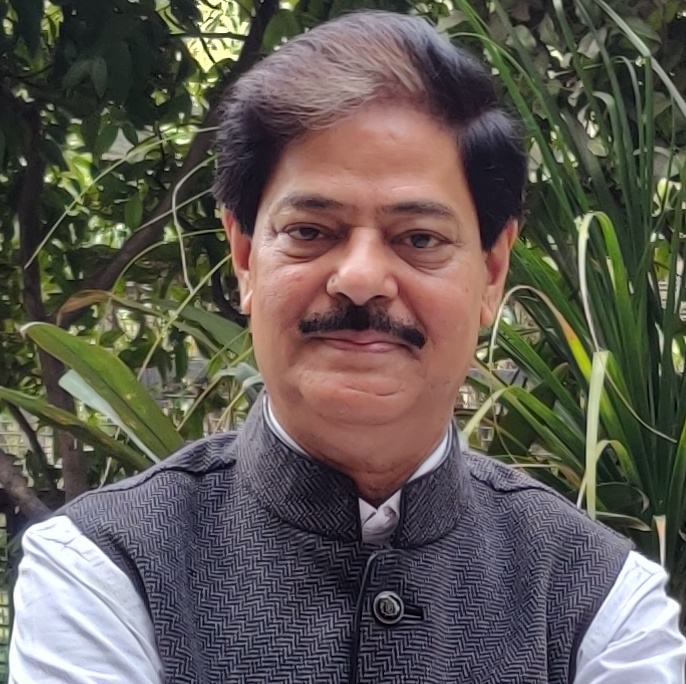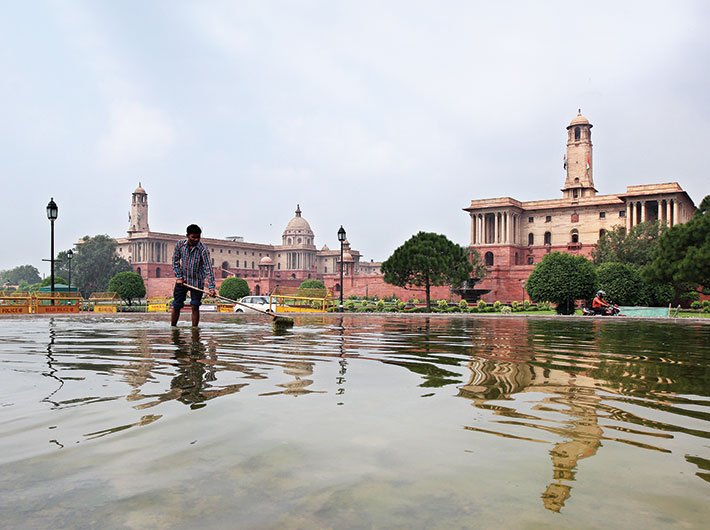The State has been encroaching upon public space and driving citizens away, moved by huge ego and arrogance
Richard Rogers, an acclaimed Western architect and author of such books as ‘A Place for all People’ and ‘Architecture and the Fair Society’, wrote, “Architecture is about Public Space, held by Buildings.” So Rogers (without drawing an analogy from Mahatma Gandhi – my reinterpretation of his talisman – of putting the poorest man/woman at the centre in any politico-socio-economic dispensation), would put public spaces at the centre of urban planning and architecture. But how can that be our planning and architecture? Our VIP practices would not permit that. Two major byproducts of the VIP culture in our country today are denial of equal opportunity and retracting accessibility to a place – basically a perpetual lockdown.
Some years ago in an article, I had lamented the metal-binding and locking up of playgrounds and stadia across the cities, which act – not what I thought then – is nothing but a reflection of VIP toxoid seeped deeply into our body politic. It practically denies the right of entry to ordinary sportspersons and youth wanting to use the facility for practice and playing games. We alone are the creator of this VIP culture because we unabashedly promote and gratuitously sustain it. We are also a product of this licentious establishment, espousing the cult of privilege seeking. This intrinsic feature of our character is shared across the sub-continent and it rampantly and flagrantly permeates every walk of our life, people, places, institutions, affairs, planning and opportunities.
Having a well-developed, modern sports facility within controlled (not necessarily gated) environment is not grudged. We do need them for hosting important sporting and cultural events. But for every such piece of art lockup, we must have continued to maintain four-five neighbourhood open spaces, what we called in our times as maidan, park or playground which were as easily accessible to the well-healed as to the gully boys. The consumerist nemesis has gulped down all of that. I am reminded of the Hindi film, Well Done Abba, starring Boman Irani and Manisha Lamba (father and daughter duo in the film). The daughter goes to the police station to file an FIR for the theft of the Well that is shown in papers but is actually not there, similar to our playgrounds. Most towns and cities have lost the playgrounds/open stadia over the years, not as much under the pressure of urbanization and colonization as under the spell of what I may call ‘PPP’ in another avtar, power-privilege-pilferage, which gives the protagonists, nothing less than a Tequila Shot of exclusivity. Leftover open grounds are in the process of getting obliterated in the relentless march of PPP.
Separately and on a different platform, I also once wrote about the need of public spaces in our urban landscapes as pedestrianised islands for the simple joy and ease of walking and for unhindered intermingling of the community. These are meant to be safer, free from clutter and non-motorised zones that encourage and facilitate public gathering, participation, community interaction and conviviality. However, here too, the spaces are either not available or the old ones are getting constricted for want of vision, planning and upkeep or under the spell of PPP.
Now, look at the India Gate surrounding. This has been the only real public space in the national capital for a hundred years… But it is rapidly being transformed into a VVIP zone in furtherance to its proximity to most exclusive habitations and offices around. Today, this historic area is marked by severe security restrictions and annoying barriers all around for the ordinary walkers. Parts of the India Gate area were brought under restrictions some years ago and the trend has continued unabated. Now, the War Memorial has come up in a huge area which is also shut for the public. Similar is the fate for the newly constructed Police Memorial in nearby Chanakyapuri. It is pathetic to see people thronging the gates vying to have a dekho and getting brushed aside by the security there. More areas have gone under the battalion/bayonet along with newer restrictions around the India Gate. Now, the very popular road enjoying the status of a high priest between the North and South Blocks is confined too, ditto its mirror image of the Central Secretariat cut across. These practices are in sharp contrast to what we hear from a renowned Delhi-based architect, Gautam Bhatia, one of the finest and sensitive architects, who recommends, “All government functions should be isolated into an altogether separate and less important non-public zone. This would allow the development of an entirely government-free cultural entity.”
What is going on? The common men and women have no dignity, no voice, totally powerless! This is a unique situation, where the State is encroaching upon the public space and driving the citizens away, moved by huge ego and arrogance, same PPP. Have we seen such things anywhere in the cities around the world? Citizens have the first right to public spaces. National memorials are all open to the citizens for paying obeisance with facility to have a closer view of such structures of eminence. These prohibitory orders are a huge disrespect to the citizens of a liberal democracy. The VIP toxin imbued with arrogance and inconsideration is killing the joy of the ordinary populace to enjoy the gift of the Nation. It is no more a common good. NOT non-excludable anymore! Large populations at one place, many of whom with no access to open spaces desperately need pockets in the urban landscape where they can unwind in leisure time with their family and friends. The India Gate lawns served this purpose in our memory of last forty years – now mostly gone and more waiting to go.
Public spaces are not planned even in our new projects. We may refer to two major urban sprawls planned for Delhi during the last thirty-odd years, Rohini and Dwarka. There was no visualisation to provide public spaces in these newly developing regions, or any other pocket of Delhi, or the whole of NCR for that matter. What disdainful arrogance is this? Or sheer colossal incompetency! Forget about the India Gate, the planners could not even conceive creating something like Janpath or Connaught Place, somewhat constricted public spaces in itself though because of the heavy, invasive and unruly through-traffic therein. Empirical and analytical assessments would have shown to the planners that any pedestrianised zone would be a non-starter without de-cluttering the main arterials carrying the MVs heading in or passing through that area – intelligent traffic management has to be an integral part of any public space development plan.
This shrinking of the public space has not only sociological and town planning concerns but also issue of physical and mental well-being for the urban population, more for the less privileged amongst them. The lack of participatory entertainment in stressful times and dearth of opportunities to socialise with friends and extended families would definitely be fraught with unhappy consequences. The entry restrictions have also terminated the daily earnings of hundreds of poor hawkers and vendors who thronged such places. Whether we acknowledge this or not, the loss of livelihood, helplessness because somebody lost his self-reliance, slipping below the poverty line, pernicious exclusion and the resultant disappointment in their hearts and the loss of dignity of the individual as guaranteed by the Preamble of the Constitution are all real life situations. The urban population today, especially those less endowed, are suffering from double jeopardy – they don’t have basic infrastructure in their surroundings and are now increasingly getting removed from what they had for free at some distance from home till a while ago.

